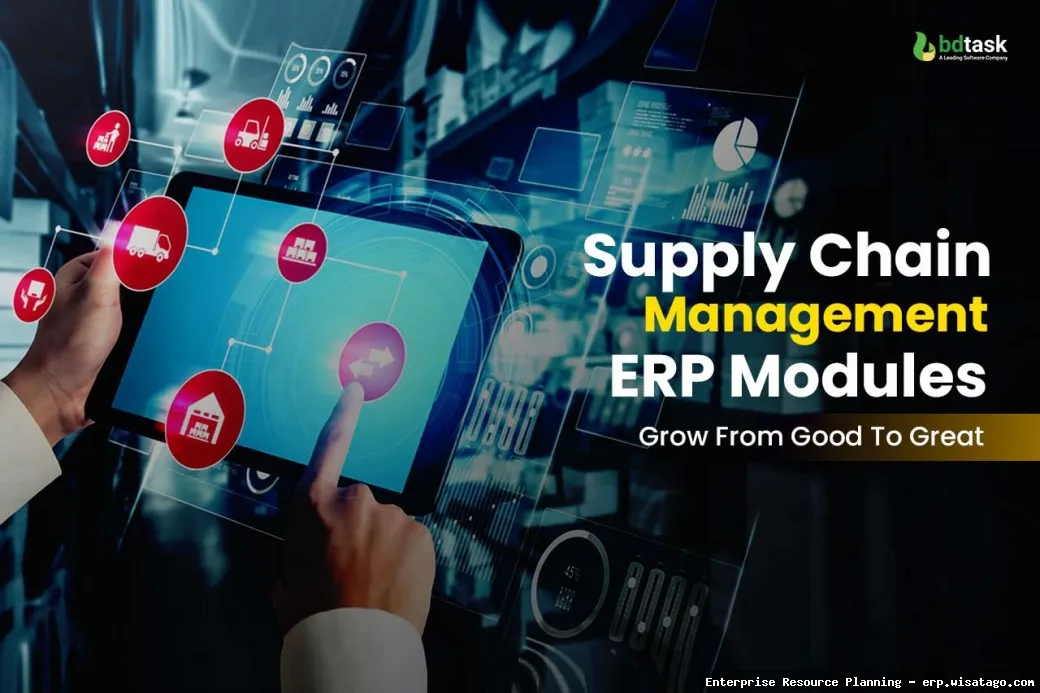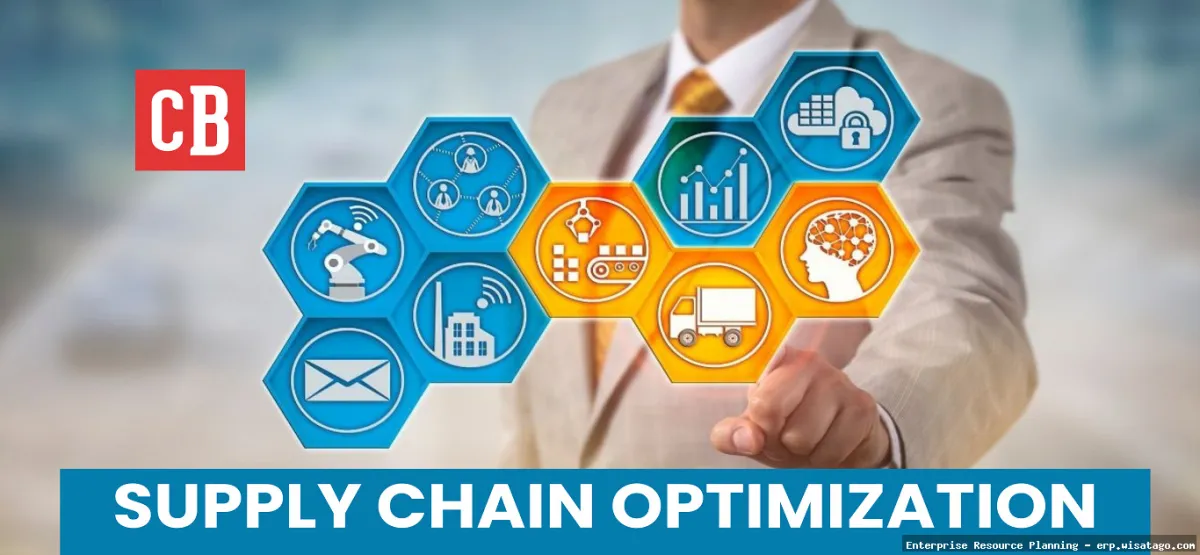High-ROI ERP Modules For Supply Chain Optimization: Complete Guide, Features and Details
In today’s dynamic business landscape, a well-optimized supply chain is no longer just a competitive advantage; it’s a necessity for survival. The complexities of managing inventory, forecasting demand, and coordinating logistics across multiple partners can quickly overwhelm traditional systems. This is where Enterprise Resource Planning (ERP) systems come into play, offering a centralized platform to streamline operations and improve efficiency. But with so many ERP modules available, how do you identify the ones that will deliver the highest return on investment (ROI) for your specific supply chain needs?
Having worked with ERP implementations for over a decade, I’ve witnessed firsthand the transformative impact that the right modules can have. I’ve also seen companies struggle when they choose modules that don’t align with their core business processes or fail to properly integrate them. The key is to focus on modules that address your most pressing supply chain challenges and offer tangible improvements in areas like inventory management, demand planning, and logistics execution. This article aims to guide you through the process of identifying and implementing high-ROI ERP modules that can significantly optimize your supply chain, based on my practical experience and industry best practices.

This complete guide will delve into the essential ERP modules for supply chain optimization, examining their key features, benefits, and potential ROI. We’ll explore how these modules can help you reduce costs, improve efficiency, enhance customer satisfaction, and gain a competitive edge. We’ll also discuss the importance of proper implementation, integration, and user training to ensure that you maximize the value of your ERP investment. Whether you’re considering a new ERP system or looking to enhance your existing one, this article will provide you with the knowledge and insights you need to make informed decisions and achieve significant improvements in your supply chain performance.
Demand Planning and Forecasting Module
Effective demand planning is the cornerstone of a successful supply chain. Without accurate forecasts, you’re likely to face either stockouts, leading to lost sales and dissatisfied customers, or excess inventory, tying up capital and increasing storage costs. The Demand Planning and Forecasting module within an ERP system provides the tools and capabilities needed to predict future demand with greater accuracy, enabling you to optimize inventory levels and improve overall supply chain efficiency.
Key Features of a Demand Planning Module
A robust demand planning module should include the following features:
- Statistical Forecasting: Utilizes historical sales data, market trends, and other relevant factors to generate statistical forecasts. This often includes various forecasting algorithms, such as moving averages, exponential smoothing, and ARIMA models. I’ve found that the ability to customize these algorithms based on product type and market conditions is crucial for achieving accurate results.
- Collaborative Planning: Enables collaboration between different departments, such as sales, marketing, and operations, to incorporate their insights into the forecasting process. This is particularly important for new product launches or promotional campaigns, where historical data may be limited. A collaborative platform allows for real-time adjustments and ensures that everyone is aligned on the demand plan.
- Demand Sensing: Incorporates real-time data, such as point-of-sale (POS) data, social media trends, and weather patterns, to detect short-term demand fluctuations and adjust forecasts accordingly. This is especially valuable for businesses with highly volatile demand or short product lifecycles.
- Scenario Planning: Allows you to create and evaluate different demand scenarios based on various assumptions, such as changes in economic conditions or competitor actions. This helps you to prepare for potential risks and opportunities and to develop contingency plans.
- Integration with Other Modules: Seamlessly integrates with other ERP modules, such as inventory management, production planning, and sales order management, to ensure that the demand plan is reflected across the entire supply chain. This integration is crucial for avoiding data silos and ensuring that all departments are working from the same information.
Benefits and ROI of Demand Planning
Implementing a demand planning module can result in significant improvements in several key areas:
- Reduced Inventory Costs: By accurately forecasting demand, you can optimize inventory levels, reducing the risk of stockouts and excess inventory. This can lead to significant savings in storage costs, obsolescence costs, and working capital.
- Improved Customer Service: Accurate demand planning ensures that you have the right products in the right place at the right time, improving customer service levels and reducing the risk of lost sales.
- Increased Sales Revenue: By avoiding stockouts and meeting customer demand, you can increase sales revenue and market share.
- Enhanced Supply Chain Efficiency: Better demand visibility allows you to optimize production schedules, transportation routes, and other supply chain activities, improving overall efficiency and reducing costs.
- Better Decision-Making: The insights gained from the demand planning module can help you to make better decisions about pricing, promotions, and product development.
The ROI of a demand planning module can be substantial, often exceeding 100% within the first year of implementation. However, it’s important to note that the actual ROI will depend on several factors, such as the accuracy of the forecasts, the effectiveness of the implementation, and the degree to which the module is integrated with other systems.

Inventory Management Module
Inventory management is another critical area for supply chain optimization. Efficiently managing inventory levels can significantly reduce costs, improve customer service, and enhance overall profitability. The Inventory Management module within an ERP system provides the tools and capabilities needed to track inventory levels, manage stock movements, and optimize inventory policies.
Key Features of an Inventory Management Module
A comprehensive inventory management module should include the following features:
- Real-Time Inventory Tracking: Provides real-time visibility into inventory levels across all locations, including warehouses, stores, and in-transit. This allows you to quickly identify potential stockouts or excess inventory and take corrective action. I’ve found that using barcode scanning and RFID technology can significantly improve the accuracy and efficiency of inventory tracking.
- Inventory Valuation: Supports various inventory valuation methods, such as FIFO (First-In, First-Out), LIFO (Last-In, First-Out), and weighted average cost. This allows you to accurately track the value of your inventory and to comply with accounting regulations.
- Inventory Replenishment: Automates the process of replenishing inventory based on demand forecasts, safety stock levels, and lead times. This helps to ensure that you have enough inventory on hand to meet customer demand without carrying excessive stock.
- Warehouse Management: Provides tools for managing warehouse operations, such as receiving, put-away, picking, packing, and shipping. This can help to improve warehouse efficiency and reduce errors.
- Integration with Other Modules: Seamlessly integrates with other ERP modules, such as demand planning, production planning, and sales order management, to ensure that inventory levels are aligned with demand and supply.
Benefits and ROI of Inventory Management
Implementing an inventory management module can lead to several benefits:
- Reduced Inventory Costs: By optimizing inventory levels, you can reduce storage costs, obsolescence costs, and working capital.
- Improved Customer Service: Ensuring that you have the right products in stock to meet customer demand improves customer service levels and reduces the risk of lost sales.
- Increased Inventory Accuracy: Real-time inventory tracking reduces errors and discrepancies, improving the accuracy of your inventory records.
- Enhanced Warehouse Efficiency: Warehouse management tools can streamline warehouse operations, reducing labor costs and improving throughput.
- Better Decision-Making: The insights gained from the inventory management module can help you to make better decisions about pricing, promotions, and product sourcing.
The ROI of an inventory management module can be significant, particularly for businesses with high inventory turnover or complex supply chains. Typical ROI figures range from 50% to 150% within the first year of implementation.
Logistics and Transportation Management Module
Efficient logistics and transportation are crucial for delivering products to customers on time and at the lowest possible cost. The Logistics and Transportation Management module within an ERP system provides the tools and capabilities needed to plan, execute, and optimize transportation activities.

Key Features of a Logistics and Transportation Management Module
A strong logistics and transportation management module should include these features:
- Route Optimization: Determines the most efficient routes for transporting goods, taking into account factors such as distance, traffic, and delivery time windows.
- Carrier Management: Manages relationships with carriers, including rate negotiation, contract management, and performance tracking.
- Freight Auditing: Audits freight bills to ensure accuracy and identify potential overcharges.
- Real-Time Tracking: Provides real-time visibility into the location of shipments, allowing you to proactively address potential delays or disruptions.
- Integration with Other Modules: Integrates with other ERP modules, such as order management, warehouse management, and inventory management, to ensure seamless coordination of transportation activities.
Benefits and ROI of Logistics and Transportation Management
Implementing a logistics and transportation management module offers several advantages:
- Reduced Transportation Costs: Route optimization and carrier management can significantly reduce transportation costs.
- Improved Delivery Performance: Real-time tracking and proactive management of shipments can improve delivery performance and reduce the risk of delays.
- Enhanced Customer Satisfaction: On-time delivery and accurate order fulfillment improve customer satisfaction.
- Increased Efficiency: Automation of transportation processes reduces manual effort and improves efficiency.
- Better Visibility: Real-time visibility into transportation activities provides better control and decision-making capabilities.
The ROI of a logistics and transportation management module can be substantial, particularly for businesses with complex transportation networks or high transportation costs. ROI figures typically range from 30% to 80% within the first year of implementation.
Supplier Relationship Management (SRM) Module
Managing relationships with suppliers is critical for ensuring a reliable supply of materials and components. The Supplier Relationship Management (SRM) module within an ERP system provides the tools and capabilities needed to manage supplier information, evaluate supplier performance, and collaborate with suppliers.
Key Features of an SRM Module
A robust SRM module should incorporate these features:

- Supplier Portal: Provides a secure online portal for suppliers to access information, such as purchase orders, invoices, and payment status.
- Supplier Performance Management: Tracks and evaluates supplier performance based on key metrics, such as on-time delivery, quality, and price.
- Supplier Collaboration: Enables collaboration with suppliers on areas such as forecasting, inventory planning, and product development.
- Contract Management: Manages supplier contracts, including terms, conditions, and pricing.
- Risk Management: Identifies and mitigates potential risks associated with suppliers, such as financial instability or supply disruptions.
Benefits and ROI of Supplier Relationship Management
Implementing an SRM module brings several benefits:. Modern business operations often rely on integrated software solutions, ERP streamlining processes across departments and improving data visibility
.
- Reduced Procurement Costs: Negotiating better prices and terms with suppliers can reduce procurement costs.
- Improved Supplier Performance: Monitoring and evaluating supplier performance can drive improvements in on-time delivery, quality, and price.
- Enhanced Supply Chain Resilience: Diversifying the supplier base and mitigating supplier risks can enhance supply chain resilience.
- Improved Communication and Collaboration: The supplier portal and collaboration tools improve communication and collaboration with suppliers.
- Better Visibility: Real-time visibility into supplier performance and contract terms provides better control and decision-making capabilities.
The ROI of an SRM module can be significant, particularly for businesses with a large supplier base or complex supply chains. Typical ROI figures range from 20% to 60% within the first year of implementation.
Choosing the Right Modules and Implementation Strategy
Selecting the right ERP modules and developing a sound implementation strategy are crucial for maximizing ROI. Here are some key considerations:
- Identify Your Specific Needs: Carefully analyze your supply chain processes and identify the areas where you need the most improvement.
- Prioritize Modules: Focus on the modules that will deliver the greatest ROI based on your specific needs.
- Choose a Reputable Vendor: Select an ERP vendor with a proven track record and a strong understanding of your industry.
- Develop a Detailed Implementation Plan: Create a detailed implementation plan that includes timelines, milestones, and resource allocation.
- Provide Adequate Training: Ensure that your employees receive adequate training on how to use the ERP system.
- Monitor Performance: Continuously monitor the performance of the ERP system and make adjustments as needed.
In conclusion, implementing the right ERP modules can significantly optimize your supply chain, reduce costs, improve efficiency, and enhance customer satisfaction. By carefully analyzing your needs, prioritizing modules, and developing a sound implementation strategy, you can maximize the ROI of your ERP investment and gain a competitive edge in today’s dynamic business environment. Remember to focus on continuous improvement and adaptation to ensure that your ERP system continues to meet your evolving needs.
Conclusion
In conclusion, optimizing your supply chain through strategic ERP module implementation is no longer a luxury, but a necessity for competitive advantage. We’ve explored several high-ROI modules, including demand forecasting, inventory management, warehouse management, and transportation management, each offering significant potential to streamline operations, reduce costs, and enhance customer satisfaction. The key takeaway is that a tailored approach, carefully considering your specific business needs and challenges, will yield the most substantial returns.
Investing in the right ERP modules is an investment in your company’s future. By leveraging the power of data-driven insights and automated processes, you can build a more resilient, agile, and profitable supply chain. We encourage you to assess your current ERP system and identify areas where targeted module implementation can drive significant improvements. Consider exploring available resources and consulting with ERP specialists to determine the optimal path forward for your organization and unlock the full potential of your supply chain. Contact us today to learn how we can help you optimize your supply chain and achieve your business goals.
Frequently Asked Questions (FAQ) about High-ROI ERP Modules for Supply Chain Optimization
What are the top ERP modules that provide the highest return on investment (ROI) specifically for optimizing my supply chain operations?
Identifying the ERP modules with the highest ROI for supply chain optimization depends on your specific business needs and industry. However, some modules consistently deliver strong returns. These typically include demand planning modules, which improve forecasting accuracy and reduce inventory costs. Inventory management modules are also crucial, optimizing stock levels and minimizing waste. Furthermore, warehouse management systems (WMS) integrated within the ERP can significantly improve warehouse efficiency, reduce picking errors, and streamline logistics. Finally, a robust transportation management system (TMS) module can optimize routing, carrier selection, and freight costs, leading to considerable savings. Prioritizing these modules can significantly improve supply chain efficiency and profitability.
How can I measure the return on investment (ROI) of implementing specific ERP modules for improving supply chain visibility and reducing operational costs?
Measuring the ROI of ERP modules requires a clear understanding of your baseline metrics before implementation. Begin by identifying key performance indicators (KPIs) relevant to supply chain visibility and operational costs, such as inventory turnover, order fulfillment rates, on-time delivery performance, and warehousing costs. After implementing the ERP modules, track these same KPIs over a defined period (e.g., 6-12 months). Calculate the cost savings or revenue increases achieved due to the modules. The ROI can then be calculated as (Gain from Investment – Cost of Investment) / Cost of Investment. For example, if a WMS module cost $50,000 and resulted in $75,000 in cost savings due to improved warehouse efficiency, the ROI would be 50%. Remember to factor in all costs associated with implementation, including software licenses, hardware, training, and consulting fees.
What are some common challenges businesses face when implementing ERP modules for supply chain optimization and how can they be effectively addressed to ensure a successful implementation?
Implementing ERP modules for supply chain optimization presents several potential challenges. One common issue is data migration; inaccurate or incomplete data can severely impact the ERP’s effectiveness. This can be addressed by investing in thorough data cleansing and validation processes before migration. Another challenge is user adoption; resistance to change can hinder the successful use of the new system. Comprehensive training programs and clear communication about the benefits of the ERP are crucial. Integration with existing systems can also be complex; ensuring seamless data flow between the ERP and other applications is vital. This requires careful planning and testing. Finally, lack of clear business processes can lead to inefficiencies even with a new ERP. Therefore, business process re-engineering should be undertaken before ERP implementation to align processes with the new system’s capabilities, ultimately leading to a more successful and impactful deployment.